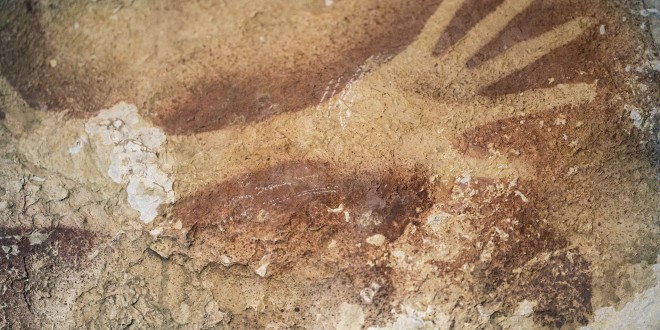
Indonesia: Ancient cave paintings to get more protection
Indonesia has pledged to protect ancient cave paintings which researchers say could prove that Europe was not the birthplace of art.
Indonesian authorities plan to place the caves, located on the central island Sulawesi, on a list of Indonesia’s official “cultural heritage” and are applying to get them included on the UNESCO World heritage list.
“This is certainly something that Indonesia can be proud of. Of course, we must do our best to protect them”, Andi Muhammad Said, head of the cultural heritage conservation office in South Sulawesi, said.
Among the paintings is a silhouette of a hand on the wall, around 40,000 years old, which was created by spraying red paint on a hand pressed against the wall. It could have possibly been made before early man was leaving artwork in caves around Europe, long thought to be the birthplace of art, Australian and Indonesian research teams said in the journal Nature. They added that a painting of a pig was found in the same cave which was dated to be 35,000 years old.
According to Said, the region around the cave had been designated a “special zone” in an attempt to protect the cave paintings.
“We are now working towards establishing these historic caves as part of our national cultural heritage”, he said.
As things stand, officials are responsible for taking care of 138 historical caves in Maros in the province of South Sulawesi. However, Said added that the current arrangement was completely disorganized and that there existed no central database of individual sites. Official recognition as a part of Indonesia’s “cultural heritage” would prompt more involvement from the central government and lead to better protection and organization, he added.
According to Said, authorities had nominated the caves to be included in the UNESCO World Heritage List in 2005. He also said that the discovery was “good for tourism in Indonesia. The cave art will surely attract visitors”.
 The Arab Democrat The Latest From The Arab World
The Arab Democrat The Latest From The Arab World





